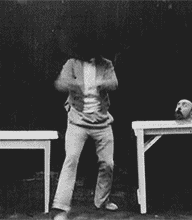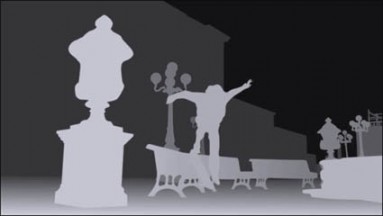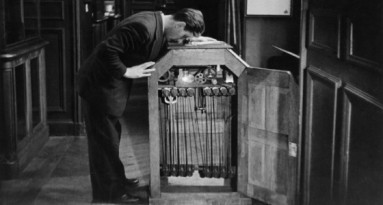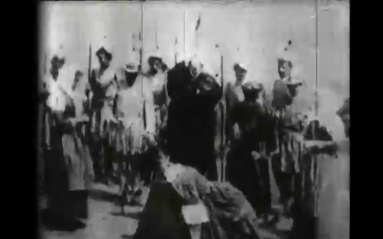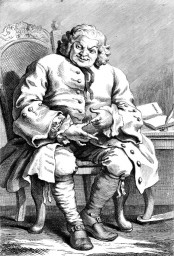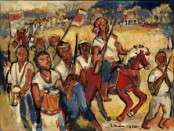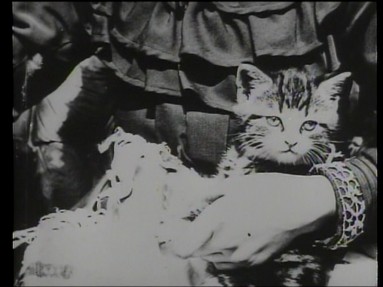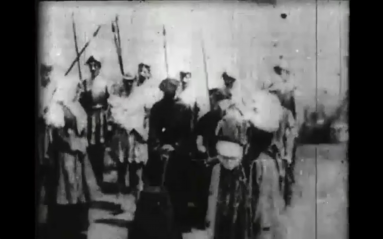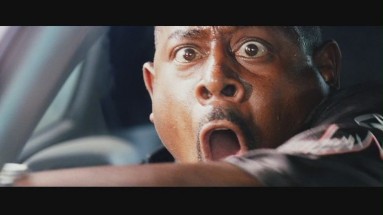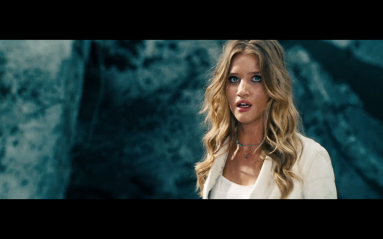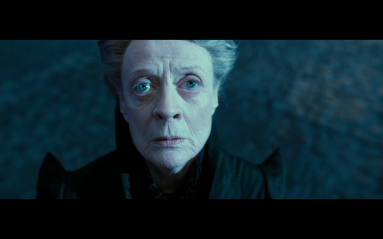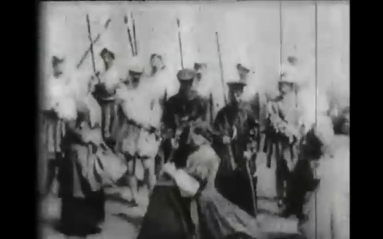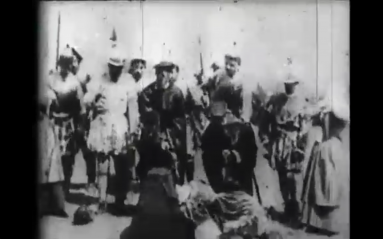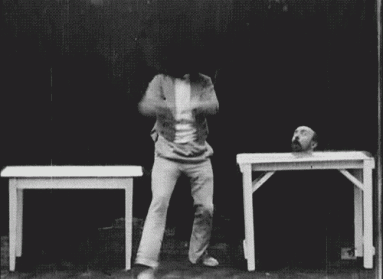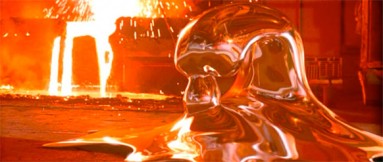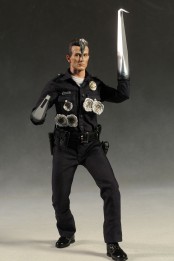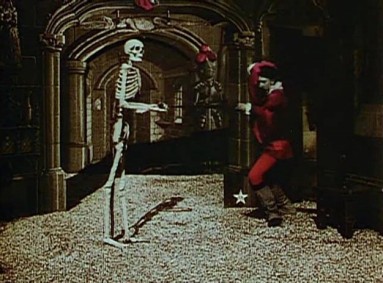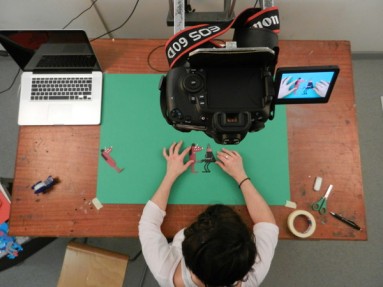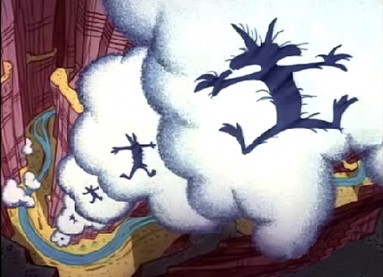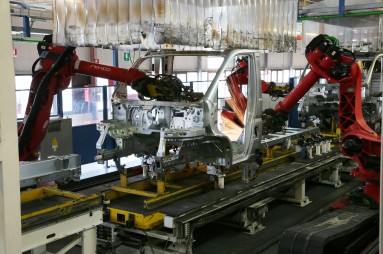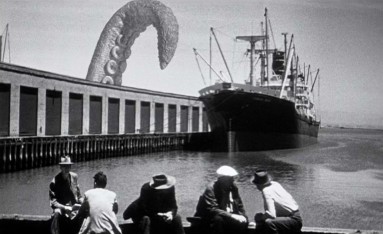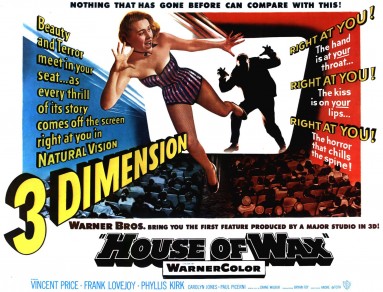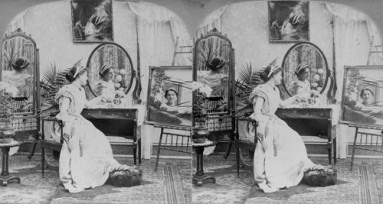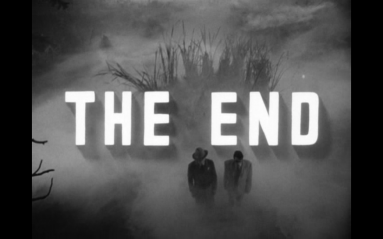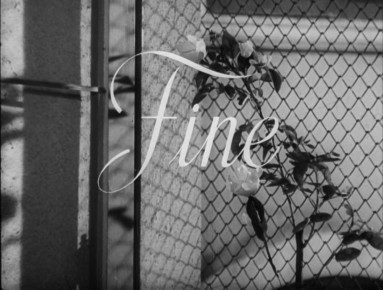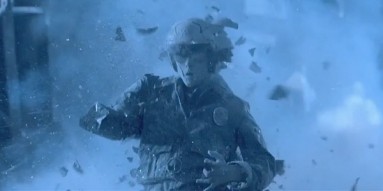[Note: I've been away from writing online for while doing research for a couple projects. One is an experimental documentary film, out this fall – more on that to come. Another is connected to a book coming out this winter from Repeater Books called Shard Cinema, an archaeology of contemporary moving images.
While writing that, I've been struck by something that critics, film theorists, and people talking in the hallways of the Regal Crossgates Stadium 18 after Jupiter Ascending tend to claim (and bemoan). Namely, that the increasing prevalence of digitally composited, animated, and/or hybrid images means a flight away from the "real world" into the immaterial. Even when they like the results – shirtless Channing Tatum gravity boot-rollerblading across the polished surface of whatever exists, who wouldn't? – and even when they get that "immaterial labor" still means real living people sitting for days on end texture mapping the buildings for Big Hero 6, the doxa goes that the results, and especially the spaces we see, have lost their ability to capture, index, portray, or think through what really exists. Because, simply enough, they aren't filmed but composited. Because there aren't real waves, just Boris FX Native Filter Suite crunching the numbers. Because the wind that shakes the barley comes from an algorithm.
I'd argue the exact opposite of this. Coming to grips with recent years through a history and practice of animation – one centered on the construction of moving images, rather than the recording of the physical, fleshly, and gusty – shows that recent movies, games, artist's video works, shows, and everything in between are uniquely thick with the social history of capitalism, especially the persistent legacies and cartography of colonialism. Moreover, they have started to reflect on and shape themselves around that fact, bringing the means of their making and all its echoes into plain view, provided we know how to get a good line of sight through all the lens flare and softly falling particles.
As noted, the key concept I've found to help wind through all this is animation. So what I'll share here over the next weeks will keep winding around that, beginning, below, with a specific instance in early film history that I'll eventually circle back around to. One note/warning: tracking out this research won't take the shape of cogent essays that tie themselves into neat bows by the end of each segment. More of a continually unraveling fabric divided into more readable chunks.]
A kinetoscope is an innocent looking piece of machinery
- "Reformed by a Picture," from the inmate-written magazine of Sing Sing prison, 1901
As far as historians of early film can agree, cinema’s first special effect is used to depict its first execution – and its first death. It comes in an Edison production, The Execution of Mary, Queen of Scots, from 1895, early years for what wasn’t yet a coherent industry, just a nascent array of competing technologies and their accompanying entrepreneurs.
Both the film and its special effect are simple enough, as each functions to show just what the title promises. We will see an execution, a public decapitation specifically. That hadn’t actually happened to a flesh-and-blood British aristo since Simon Fraser
(the 11th Lord Lovat, for those counting) in 1747 or on US soil since 1811, when more than 21 slaves were beheaded following a show trial (and more than 100 in the massacre beforehand), and their heads stuck on pikes as warning to future insurgents, for their role in the German Coast Uprising in what later became Louisiana. However, not just capital punishment but beheading in particular remained widespread in attempts to quell revolt, in part because of its deep symbolic weight, transposing decapitation from arguably the major signifier of 17th and 18th-century regicide – the head of the head of state… – to the arsenal of colonial retribution.What that history poses starkly is something we know all too well: that any attempt to draw a separation between this violence and how it is represented forgets that it already is both image and act, drawing a portrait of how the world is to the powers marshaling it. To look back across centuries of efforts to police dissent before, during, and after it makes itself visible reveals not just theses acts of killing, but also their display, serving as posthumous shaming, hypothetical warning, and, crucially, diversion for those who felt unimplicated. It treats the murder of slaves, rebels, and the poor as something for public consumption and as what would become, in the language of early cinema, an attraction, a self-same spectacle.
Coming to grips with the uncanny resonance between early cinema and the screen culture we live now has to include not just the kitten video – see 1901's Sick Kitten – but also media spectacles of execution, above all the "lynching film," already present in Edison's 1895 Frontier Scene and only amplifying from there well into 1910s. The medium of film found an extant history of displaying the dead to remind the living what they should expect, and the coalescing industry of cinema wasted no time continuing this practice.
So in a film from the last years of the nineteenth century, a head will be severed from its neck before our eyes, although it will as sanitized and distanced as could be: a white head, and a royal one no less, from another country, from another century. Like so many of the shorts from the first years of recording moving images, the film will do little beyond support this central attraction. It is a gag’s small vessel, a container shaped around the thing it aims to do. Which, in this case, means a cut, both technical and represented, centered smack-dab in the middle of its 13 second running time, bisecting the film’s duration as plainly as its splits the body that kneels in the frame’s center. The film hinges on this, its atrocious binary switch: head on, head off.
At first, though, Mary is not kneeling. She is standing when the film starts, facing to our left. To her right are two lines of men, arrayed to face her and, therefore us. Except it is perhaps wrong to say us, because the film was meant for a Kinetoscope, which initially allowed only a single viewer at a time, one who must bend her head down to peep in, baring the back of the neck in echo of what is watched.
(This direct and directed physical parallel of watcher and watched persists.
Recent large-scale cinema has become obsessed with providing us images of astonished viewers as mirror portraits, as though to slowly goad us into matching their gape. As if well-aware that what we’re shown isn’t genuinely sublime, at least not in the way that its characters seem to be feeling it, just unprocessable in the sheer screen data and the scope of the labor behind it.)
The men stand up straight, though. With the exception of the executioner himself, they seem continually unsure what to do, what they are there for anyway. (To watch, evidently, to remind us that this is worth watching.) They spend most of the film raising and lowering weapons in a gestural sympathy with the axe, in contradistinction to how the Kinetoscope viewer must adopt the victim’s curved spine. None of these men seem more superfluous than the second executioner, who is, we suppose, a back-up or reserve for case of emergency, a pinch killer. He does even less than the others and never raises a hand or a weapon. Once the deed is done, he bends down and stares at the severed neck like it had something else to say or, like a Kinetoscope, had a tiny picture galloping along inside it, an instant replay.
The whole layout is geometric,
Mary kneels. The axe raises all the way up and behind the back of the executioner, before it falls, slowly, almost drowsily, to cut the head from the body in one fell swoop. The head rolls away, rolls back a bit. No matter how many times I’ve seen this, I still shudder a little each time, no matter that the effect is “crude” – or, more likely, exactly because of that.
---
Méliès the GIF
As for the effect itself, that stop trick/splice substitution – in this case, stopping the camera and swapping out a beheadable dummy for the live actor – comes to form the star technique of more famous films from George Méliès, Cecil Hepworth, and others in immediately following years. The operator stops the camera mid-action, anyone in the shot freezes, and some element is changed, moved, or removed before the camera starts again, picking up from the next frame. When watched at speed, an object will disappear, transform, or appear without a transition, which is evidently what we often mean by “like magic,” as if gradualism promises realism.
Only a few decades later, though, special effects will start to get criticized when their transitions are too sharp, when technique can't smooth its rough patches and the gaps between difference are too wide.
No wonder that Terminator 2's T-1000 had to move like wet chrome, because liquid makes a promise of change without frames or leaps. That liquid is both the ultimate slapstick material, already a gag – Arnold punching the head, unaware that it can just morph into a hand – and never very funny, without enough stubbornness to build a good joke around. Just an endlessly self-repairing and humorless cop. Except, of course, for when it gets frozen and, in trying to walk, breaks itself again and again, like a glass horse that doesn't know its own strength.
The Haunted Castle
Méliès himself claims that he discovered the technique accidentally. Filming a city street, his camera jammed a moment before starting again. When he prints and projects the film, “having joined the break, I suddenly saw an omnibus changed into a hearse and men into women.” He first uses it intentionally in The Vanishing Lady (1896), whose title says it all, and by the winter of that same year, in The Haunted Castle. There, it turns a dangling bat into a battish man, complete with a small puff of smoke, thereby inaugurating a cinematic line that found itself, exactly one century later, watching Quentin Tarantino arrange to get himself bled to death by Salma Hayek as a vampire stripper.
The decapitation and the vampiric metamorphosis are enabled by the same technique, the stop trick, but they work to opposite ends. In Execution, it shows two distinct bodies – one human, one inhuman; one alive, one neither alive nor dead – as identical, joining them together within a feigned unity of time through a split as invisible as possible. The effect aims to shroud itself in order to direct attention to bigger tricks: to make a third body, that of the dead, or, in films to come, to advance a story by piecing together camera positions and locations. In The Haunted Castle, though, it replaces one body (a bat) with what is blatantly a different one (a man). It doesn’t hide its cut but brandishes it, under the sign of the supernatural and the joy of the trick itself.
What joins them a sense of time both seen in the films and seething behind them. That sense derives from one of the most basic properties of film, and later analog and digital video: the time of recording does not have to be identical to the time of watching. There can be a gap, a crack or yawning.
The most extreme example is stop-motion animation, including hand-drawn cartoons, where there is no "natural" motion whatsoever. Any movement we see has to be built out of a set of stills, not in the way that all film/mechanical cameras divide motion into discrete photos
The same is true of the effect at work in Execution. To make the fall of an axe appear seamless in time, there had to be an entire other set of movements and efforts. Thomae stands up and hustles out of frame, pulling the blindfold off first. Everyone else holds still as possible, the axe wavering a bit, and uncredited persons drag a dummy into frame. I can only imagine that people laughed, like whenever we run to set ourselves up as a tableau in front of a self-timer, and they were surely told to be serious, this being an execution and all, and they laughed harder.
The Fiat Ducato being assembled at the SevelSud factory in Val Di Sangro
At the broadest, we could say that every cut, in camera or in post-production, describes a version of this same split in time: between two scenes/locations within the film, sure, but also between a time of mechanical advance and a time of everything else that makes that advance go and provides its materials. It's like what Romano Alquati heard in his interviews with machinists at the Fiat factories. Automation for them hardly meant deskilling or relaxation but rather a constant and anxious effort to tweak, repair, supplement, and route around automation in order for the allegedly "automatic" work to look like it actually worked – that is, to become an image of what was supposed to need none of that.
---
It Came From Beneath the Sea, 1955
This technical capacity (to stop the camera, and so to have the time of recording and time of watching differ) is an extremely obvious one. So much so that it wouldn't be worth dwelling on, were it not for the fact that so many of the following century’s moving images, and the efforts to talk and write about them, come to be structured the idea that "naturally" (albeit via mechanical processes), those two times – recording and viewing – should be identical. That an attempt to capture a "living" temporal succession is the special province, if not moral duty, of mechanically-recorded motion, and that any deviations from this are therefore special effects. In short, that despite a few allowable creative dilations (for things like dream sequences, or vampires, or earthquakes, or, as I prefer, some combination of the three), things should come before our eyes as they came before a camera, with a minimum of distractions or Vaseline between each.
But to call something a special effect is no more a neutral designation than to call it natural. It draws a line in the sand, traces it over and over again until it becomes a trench, a fact of the historical landscape that our thinking comes to shape around. We can see this with stereoscopic (3D) film, which gets recurrently posed as something extra, a supplement or cheap trick that demands that a literally intervening layer of red/blue or polarized plastic. But the stereoscopic is not a technical exception or latecomer.
It was being experimented with and developed from the 1890s on, from before the Lumière workers left the factory (and kept sneaking glances up at the camera) and the train left Ciotat. It is a historical exception, one that appears out of joint only insofar as it measures the inseparability of moving images from the movement of capital. Because for that tight bond, 3D has only functioned as an occasional spur to help goad viewers back to media whose centrality is uncertain and whose profitability is hemorrhaging.
Similarly, to call the beheading in Execution a "special effect" is only to make it retroactively so, to align it with a certain tendency in screen culture that came to dominate economically. That tendency, beginning in the first decades of the twentieth century, is for commercially-produced moving images to become increasingly, if not exclusively, committed to showing bodies do things with and to each other at velocities we learn to think of as human. Yet what falls under that baggy category gets equally restricted, especially in terms of a dual space.
First, as screen space that's overwhelmingly treated as a coherent volume, where dissolves, overlays, and anything else that might reminds us how screens are not pools but textures will be restricted to title sequences, witches' spells, scenes of nervous excitation, or films talked about as art.
Second, as a space and time of viewing that encourages paying attention to the film as if it was a text, specifically, a plotted work in line with the bourgeois novel. Fitting, given the increasing organization and marketing of films, from the early 1910s on, around the principle of a story, a plot by which an individual's progress can be charted rather than a field of collisions and affects. That effort, in line with the attempt to create tiered class systems of viewing capable of securing spaces where middle class viewers didn't have to mix and mingle with the nickelodeon mobs, required real concrete shifts, like raising ticket prices, stopping the booze, and eventually assigning specific start times for a film (breaking the film off from the flow of images to declare it a unitary, complete thing.) Thankfully, none of this ever worked like it was supposed to.
But one of the side effects was to declare any disruption of that naturalized rate of motion, in which what you see feels like what the camera saw, to be a "special effect": as something that's endlessly present and always at work behind the screen, but that becomes only visible as an exception. What conveniently got hid along with this sense of time was the sense not just of the human labor embedded in it but the inextricability of that labor from the mechanisms and systems it used: that is, of the violence of its motion. It's been cyborg cinema from the start, from long before green screens and motion capture and fluid effects, before a robotic cop gets frozen, shot, and shattered into a million little pieces without anyone having to yell cut.
